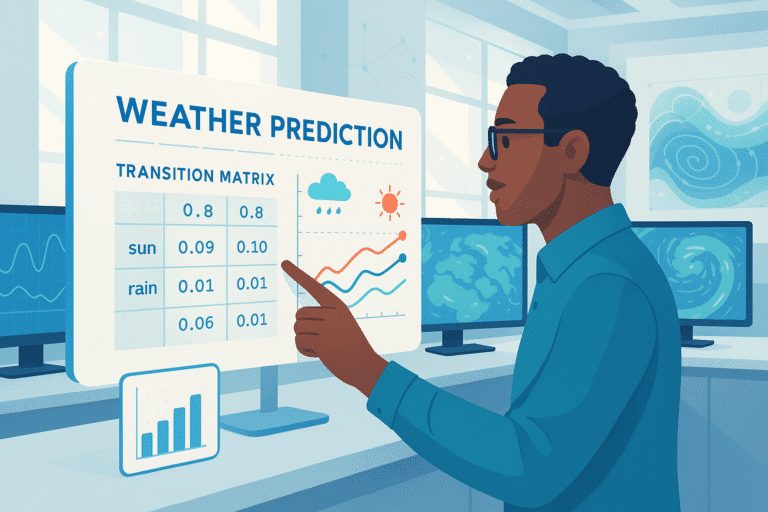In a world where data lies at the core of strategic decision-making, business analytics and data analytics are often used interchangeably. However, these two disciplines have distinctly separate objectives. One focuses on performance and strategic decision-making, while the other delves deeply into data analysis. So, what distinguishes business analytics from data analytics? Which should you choose based on your needs? This article takes you step-by-step towards a clearer understanding.
What is Business Analytics?
Business analytics is a discipline that leverages data to make strategic decisions. It relies on predictive analyses, statistical models, and data visualization tools to assist companies in optimizing their performance.
Main objective: To predict and recommend actions for improving business strategy and resource management.
Example: A retail company employs business analytics to forecast consumption trends and adjust its inventory based on forecasts.
Business analytics transcends traditional data analysis by incorporating advanced machine learning models and simulation techniques to evaluate multiple scenarios. This enables companies to anticipate market changes and adapt swiftly.
What is Data Analytics?
Data analytics (DA) is a broader discipline encompassing the exploration, transformation, and interpretation of raw data. It prioritizes more on descriptive and diagnostic analysis to explain what happened and why.
Main objective: To comprehend trends, identify patterns, and derive actionable insights from data.
Example: An e-commerce site utilizes data analytics to assess user behavior and optimize its conversion funnel.
Data analytics is frequently applied in fields like scientific research, finance, and healthcare to extract insights from large datasets and improve the comprehension of observed phenomena.

What are the differences between Business Analytics and Data Analytics?
Criterion | Business Analytics (BA) | Data Analytics (DA) |
Objective | Strategic decision-making | Data analysis and interpretation |
Approach | Predictive and prescriptive | Descriptive and diagnostic |
Tools | ||
Usage | Optimizing business performance | Analyzing raw data and detecting trends |
Application examples | Improve marketing strategy, optimize sales | Analyze customer behavior, detect fraud |
What types of analysis are used?
There are four main categories of analysis applied in both business analytics and data analytics:
- Descriptive analysis
Objective: Summarize historical data to understand what occurred.
Example: Track monthly sales in a company. - Diagnostic analysis
Objective: Understand the reasons behind a phenomenon.
Example: Determine why a marketing campaign failed. - Predictive analysis
Objective: Use past data to forecast the future.
Example: Predict product demand based on seasonality. - Prescriptive analysis
Objective: Recommend actions for achieving an optimal outcome.
Example: Adjust the supply chain based on sales forecasts.
Data analytics primarily concentrates on the first two analyses (descriptive and diagnostic), while business analytics also includes predictive and prescriptive analysis.

Concrete case studies:
Case Study 1: Business Analytics in Aerospace
An airline employs business analytics models to optimize its fleet management. Through predictive analysis, it adjusts its prices based on demand to maximize its occupancy rate.
Moreover, it integrates prescriptive analysis to suggest optimal routes and avoid unnecessary losses, considering weather conditions and fuel consumption.
Case Study 2: Data Analytics in the Banking Sector
A bank implements data analysis algorithms to detect fraud in real time. By analyzing millions of transactions, it identifies suspicious activities and prevents fraud before it happens. With diagnostic analysis, it can also comprehend the causes of fraud and adjust its algorithms to enhance efficiency. By cross-referencing data from multiple sources, it detects fraudulent behavior patterns and improves the security of customer accounts.
How to choose between Business Analytics and Data Analytics?
The choice between business analytics and data analytics depends on your goals and professional setting:
- Do you aim to improve your company’s performance? Opt for business analytics.
- Do you want to explore and comprehend complex data? Consider data analytics.
- Do you own a business and wish to enhance your strategic decisions? Business analytics will be more suitable.
- Are you an analyst or data scientist looking to process raw data? Data analytics is for you.
- Are you looking to develop a hybrid approach? Some roles combine both, including the Business-Oriented Data Analyst, who employs advanced analysis techniques to guide the company’s strategy.
Conclusion
While business analytics and data analytics are closely interrelated disciplines, they differ in their objectives and approaches. One focuses on strategic decision-making, while the other aims to extract and analyze data to derive insights.
Depending on your needs, you can choose one or the other, or even combine them to maximize the impact of your data analyses! Companies are increasingly investing in these fields to enhance their competitiveness. Understanding their differences and synergies is therefore a significant asset for professionals seeking to advance in the data world.










